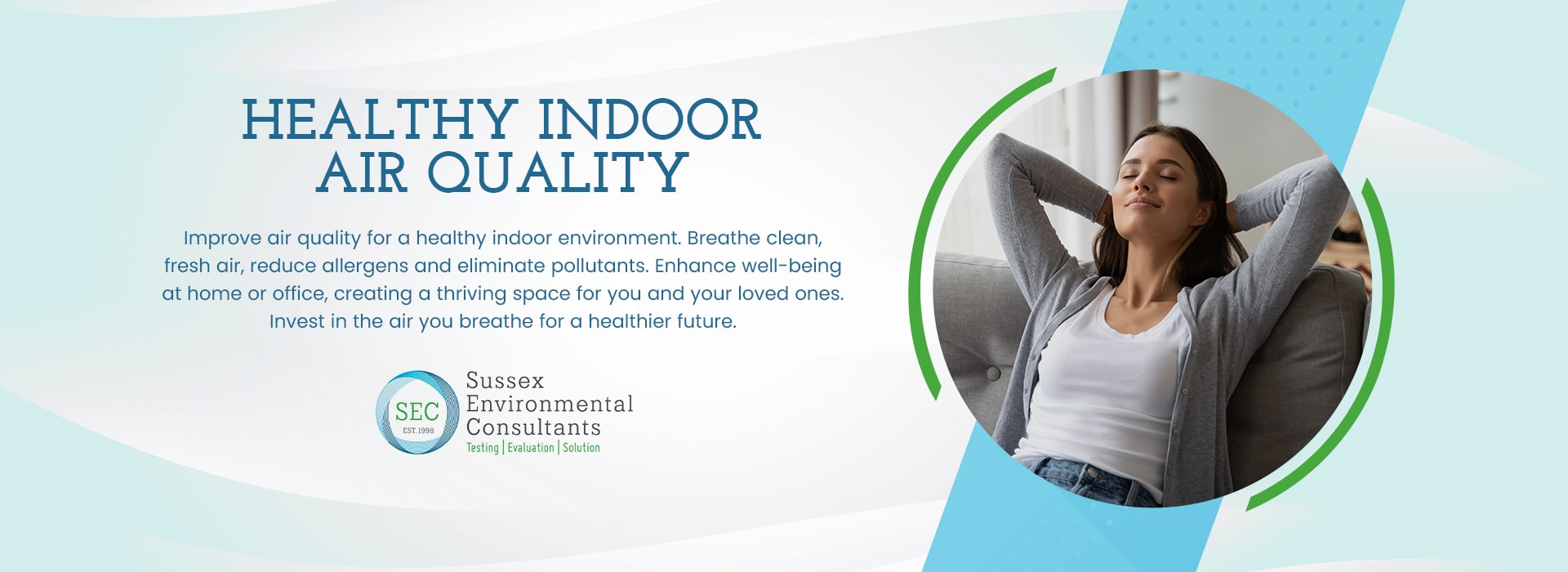Charles Gallagher, an attorney specializing in toxic mold litigation in St. Petersburg, Florida, recommends selecting two separate companies to perform the inspection and remediation to ensure impartiality, and even more important, to make certain the inspection has merit. Sussex Environmental provides unbiased Inspection services and does not do remediation.
Indoor air pollution is caused by the build-up of contaminants mostly from inside the building. Common sources of indoor pollution are building materials and furnishings, copy machines, pesticides, cleaning agents and biological organisms. The can all contribute to building-related illness such as eye, nose and throat irritation. Proper design and maintenance of the system is critical in ensuring appropriate ventilation and minimizing indoor air pollution. Sussex Environmental staff have over 30 years’ experience in industrial, commercial and residential ventilation and indoor air pollution. Contact Sussex Environmental with questions on monitoring and developing a preventive maintenance plan for your ventilation system and healthier indoor air.
The heating and air conditioning system (HVAC) in a building is very similar to the respiratory system in the human body. The HVAC system provides conditioned air to building occupants and is essential for comfort to occupants. Some air ducts are insulated with a porous surface that trap particulates. These include pollen, insect parts, sink flakes and other organic matter. These materials are often hygroscopic and absorb moisture from the air. These result in increase in bacterial and fungal growth that can cause sick building syndrome. Clean and maintain your HVAC system regularly and contact Sussex Environmental if you think you have signs of heavy particulates or health concerns.
Mold testing begins with an objective inspection conducted by a Sussex Environmental Health technician who visits the site and conducts a comprehensive assessment of the premises for mold or indications of moisture intrusion. Upon completion of the inspection, we explain to the client what we have found and where it may be necessary to collect samples.
The goal of biological sampling is to help determine whether the biological particles present in a particular environment are affecting or causing irritation in certain individuals. Sampling is also used to locate the sources of indoor microorganisms and facilitate an effective remediation. While we are typically surrounded by a wide variety of different microorganisms every day, sampling provides us with a method to establish in a scientific way whether the environment in question contains more organisms than would normally be present. There are numerous techniques that may be used to evaluate the level of indoor microorganisms.
Professional certification is a voluntary process by which a non-governmental entity grants a limited-time recognition to an individual after verifying that they have met a set of predetermined and standardized criteria. The certification program identifies practitioners who have demonstrated the knowledge, skills and abilities to perform a particular job in the specific industry as determined by industry experts. To retain the credential, certificates must maintain continued competence. Assessment-based certification is a training course; at completion, attendees take a test on what they are supposed to have learned. Certification is not awarded and there are no continuing education requirements. The use of letters, acronyms and the word “certified” are reserved to holders of professional certifications as defined in the standard.
The first step in determining need for testing is: what questions do you want answered? Do you want to know areas of contamination of a water loss? Are you concerned with determining whether the indoor environment is impacting your health? There are different test methods used for different scenarios. Testing can be expensive and often inconclusive (i.e., ERMI testing provides an historical perspective rather than one based on current conditions); spore traps can provide information on current conditions but must be professionally interpreted to determine source of molds. Do not let anyone talk you into sampling the indoor environment. Always request a thorough inspection of the indoor environment to determine need for sampling first.
First of all, never let the remediation contractor provide post-remediation and testing to ensure that remediation was successful. This is a conflict of interest and unethical. The post-remediation verification is provided in several steps and suggested to be performed by a certified professional:
- Visual inspection to ensure specifications were followed, moisture source identified and corrected, contents and debris removed, visible mold removed, work area dust free total spore concentration less than typical normal fungal ecology
- Is the total spore concentration of the affected area less than comparison sample (outdoors or unaffected area of building)?
- Is the level of each fungal type less than the comparison sample?
- Is the area acceptable for removal of containment barriers and occupancy?






